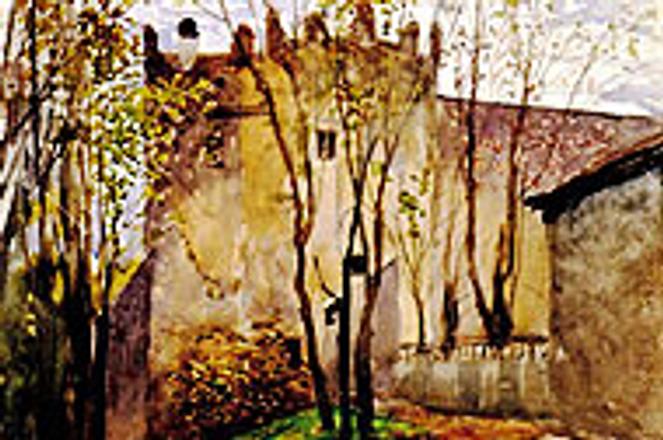MEDNYÁNSZKY's life's work is on display.photo: Courtesy of SNG
PAINTER Ladislav Mednyánszky was born in 1852 to an aristocratic family in Beckov, at that time a part of upper Hungary under the Austro-Hungarian monarchy, today a town in the western corner of Slovakia. Neither obviously Slovak nor Hungarian, Mednyánszky's origin can be considered as European as his work.
The two nations have recently had the chance to get to know the entire spectrum of his work. A mutual project prepared by Slovak and Hungarian curators was first presented at the Hungarian National Gallery in Budapest (October 14, 2003 to February 15, 2004). Currently, it can be seen in Bratislava, at the Esterházy Palace of the Slovak National Gallery (SNG), where it will run until August 29.
The collective exhibition Ladislav Mednyánszky (1852-1919) displays over 400 paintings and drawings by one of the most significant artists to have lived and worked on Slovakia's current territory. Over 200 works come from the Hungarian gallery and 100 from the SNG and other Slovak galleries; private collectors from these two countries own the rest.
Organised chronologically, the exhibition follows the path from the artist's first attempts at landscapes and figurative paintings, influenced by his academic studies, to his gradual shift to impressionist and expressionist techniques. An interesting aspect of his work is the contrast between how he captures the Hungarian lowlands and the High Tatras mountains in Slovakia, and a significant part of the exhibition features portraits of young men and family members or friends. The path ends with his report on the atrocities of the first world war.
MEDNYÁNSZKY's life's work is on display.photo: Courtesy of SNG
The display also includes Mednyánszky's diaries, photographs, and letters, which document the artist's rich life and help to put his work into context. The project details the process of restoring Mednyánszky's large canvas painting, Italian Mountainous Country. A catalogue in four languages - Slovak, Hungarian, German, and English - accompanies it.
According to the curators, Mednyánszky's landscape and figurative paintings have drawn the attention of experts and art lovers, mainly from Slovakia and Hungary, since the 1880s. In both of these countries his work represents a significant part of the national cultural heritage.
In Slovakia, the SNG administers Strážky Chateau, a place where the Mednyánszky family spent some time. At the beginning of the 1990s, the gallery opened a large exposition at the chateau of Mednyánszky's works that illustrate his frequent visits there. A decade later the exposition was enriched by more of the artist's pieces, widening the perception of his work connected to Slovakia.
By Zuzana Habšudová


